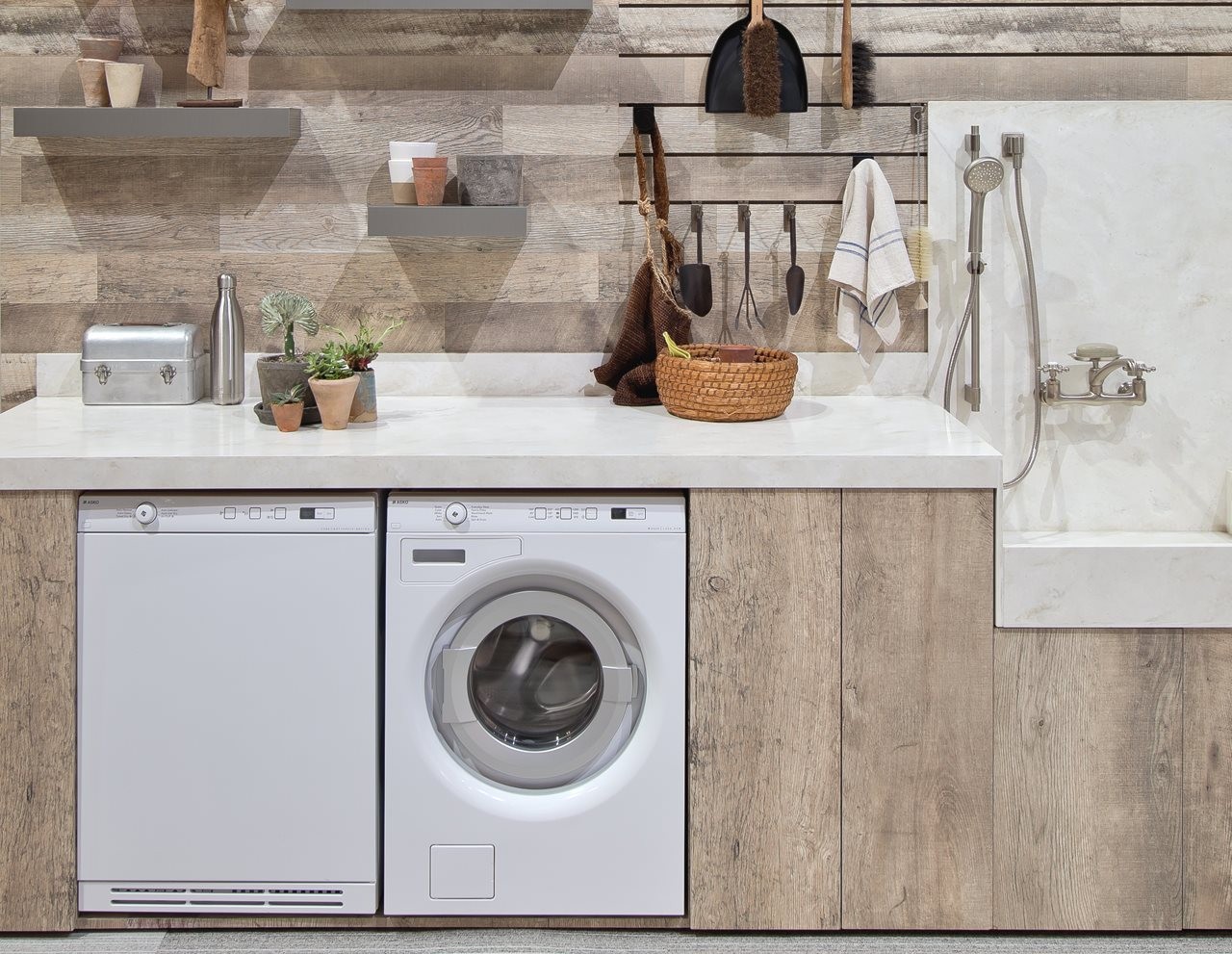(BPT) – A recent survey found that 1 in 3 people say they have been more environmentally conscious than prior years, and 70% try to purchase environmentally friendly products*. As more people make an effort to go green, the home is a natural place to start. From green building products to eco-friendly tech, try these five tips for creating a more sustainable home.
1. Choose Green Décor

Nature’s very best colors, shapes and textures can help create a soothing and stylish home when incorporated into everything from decorative touches to more permanent design elements like cabinets, countertops and floors. Today, it is easier than ever for eco-conscious homeowners to embrace nature’s beauty without destroying it. For example, the Wilsonart® HPL collection offers environmentally sustainable surfaces ideal for countertops, cabinets, fixtures, shelves, architectural doors, walls and more. The collection is available in an array of designs that mimic the best of Mother Nature without impacting the environment by using on average twice as much post-consumer recycled content than other laminates.
2. Opt for Energy-Efficient Appliances

Households can be contributors to harmful greenhouse gases if they use home appliances that consume a lot of energy. Installing energy-efficient appliances can help homeowners protect not only the environment but also save money. Energy-efficient appliances, such as refrigerators, dishwashers and laundry machines, use less energy and conserve water resulting in lower utility bills and less impact on the environment.
3. Use Smart Home Technology to Conserve Water and Energy

Gone are the days when limiting your shower to five minutes or lowering your thermostat were the only ways to ensure less water and energy consumption at home. Smart home technology is now available on water treatment systems and thermostats to help homeowners track and control water and energy usage resulting in improved conservation as well as lower utility bills on the home front.
4. Grow Your Greens

Save money and make the earth a little greener by creating a garden at home. Producing your own foods is an easy way to make a positive impact on the environment. The more food you grow on your own, the fewer trips made to the store, saving energy, waste, time and money. Plants also act as natural air purifiers by taking in carbon dioxide and releasing oxygen. Many plants help to filter airborne toxins, dust and germs as well.
5. Recycle

Recycling is one of the easiest ways to go green at home. In addition to establishing an at-home recycling system, go beyond traditional efforts by buying products made from recycled material or from companies dedicated to sustainability. From paper goods to building materials, the availability of sustainable products is limitless. Look for products made from renewable plant-based materials and do not contain polystyrene foam or those certified by SCS Global Services to contain post-consumer recycled content, like Wilsonart Laminate. In fact, since 2002, the company has incorporated enough post-consumer recycled content into its products to save an equivalent of almost 7.4 million trees.
Small decisions can significantly impact the environment, and the home is the perfect place to start making a difference. For more inspiration on home décor that uses environmentally sustainable materials, visit wilsonart.com/athome.
*According to an April 2021 Sustainability Consciousness survey of Trusted Media Brands Inner Circle.

